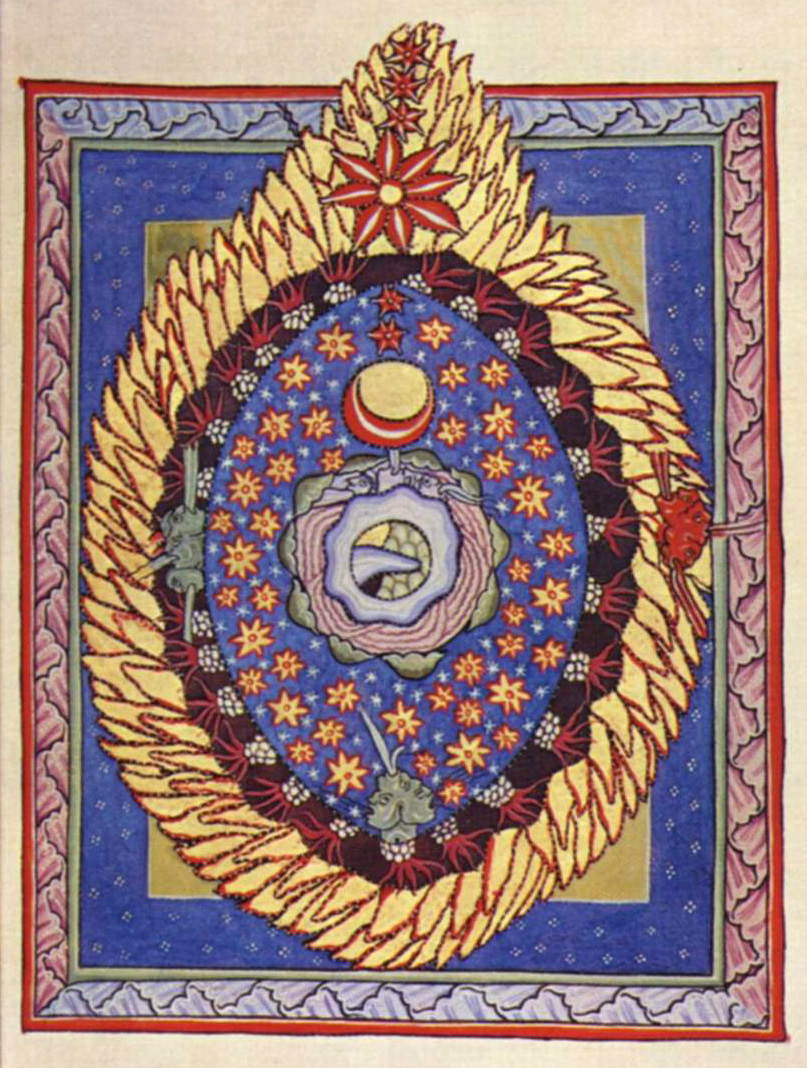Hildegard Von Bingen Scivias Pdf
Throughout the ages, the mystics have kept alive the awareness of our union with God and thus with everything. What some now call creation spirituality (Fox Institute Opening), deep salvation, or the holistic Gospel was voiced long ago by the Desert Fathers and Mothers, some Eastern Fathers, in the spirituality of the ancient Celts, by many of the Rhineland mystics, and surely by Francis of Assisi. [1] Many women mystics were not even noticed, I am sorry to say.
Julian of Norwich (c. 1343-c. 1416) and Hildegard of Bingen (1098-1179) would be two major exceptions (though even they have often been overlooked).
Hildegard of Bingen communicated creation spirituality through music, art, poetry, medicine, gardening, and reflections on nature. She wrote in her famous book, Scivias: “You understand so little of what is around you because you do not use what is within you.” [2] This is key to understanding Hildegard and is very similar to Teresa of Ávila’s view of the soul. Without using the word, Hildegard recognized that the human person is a microcosm with a natural affinity for or resonance with the macrocosm, which many of us would call God. Our little world reflects the big world. The key word here is resonance. Contemplative prayer allows your mind to resonate with what is visible and right in front of you.
Contemplation is the end of all loneliness because it erases the separateness between the seer and the seen.
Perhaps no other medieval composer has captivated the interests of popular audiences, scholars, and the religious faithful as Hildegard of Bingen. She is by far the most famous composer of plainchant, and her 77 liturgical chants and morality play have found a happy place today in the repertoires of both religious congregations and classical and New Age artists alike. HILDEGARD OF BINGEN MUSIC, HARMONY AND THE COSMOS Twelfth century nun, Hildegard of Bingen, is becoming increasingly familiar to modern. Mechtild and Hildebert von Bermersheim. As a child, she displayed an unusual. 3 Hildegard of Bingen, Scivias, trans. Mother Columba Hart and Jane Bishop, with an introduction by Barbara J.
Hildegard spoke often of viriditas, the greening of things from within, analogous to what we now call photosynthesis. She saw that there was a readiness in plants to receive the sun and to transform it into energy and life. She recognized that there is also an inherent connection between the physical world and the divine Presence. This connection translates into inner energy that is the soul and seed of everything, an inner voice calling you to “Become who you are; become all that you are.” This is our “life wish” or “whole-making instinct.”
Hildegard is a wonderful example of someone who lives safely inside an entire cosmology, a universe where the inner shows itself in the outer, and the outer reflects the inner, where the individual reflects the cosmos, and the cosmos reflects the individual. Hildegard says, “O Holy Spirit, you are the mighty way in which every thing that is in the heavens, on the earth, and under the earth, is penetrated with connectedness, penetrated with relatedness.” [3] It is truly a Trinitarian universe, with all things whirling toward one another from orbits, to gravity, to ecosystems, to sexuality.
Gateway to Silence:

Practice being present.
References:
[1] See a timeline of Mystics and Non-Dual Thinkers throughout history (PDF).
[2] Hildegard of Bingen, Scivias 1.2.29. Translation supplied by Avis Clendenen, “Hildegard: ‘Trumpet of God’ and ‘Living Light'” in Chicago Theological Seminary Register 89 (2), Spring 1999, 25.
Plainchant
[3] Hildegard of Bingen, Meditations with Hildegard of Bingen, ed. Gabriele Uhlein (Santa Fe, NM: Bear & Co., 1982), 41.
Adapted from Richard Rohr with John Feister, Hope Against Darkness: The Transforming Vision of Saint Francis in an Age of Anxiety (Franciscan Media:2001), 135; and unpublished “Rhine” talks (2015).
Copyright © 2017 Center for Action and Contemplation. Reprinted by permission of the Center for Action and Contemplation. All rights reserved.
Sign up to receive CAC’s free daily, weekly, or monthly emails for yourself by visiting https://cac.org/sign-up/ .